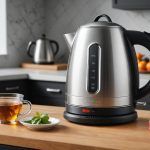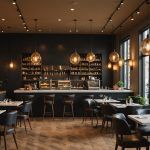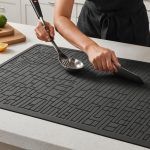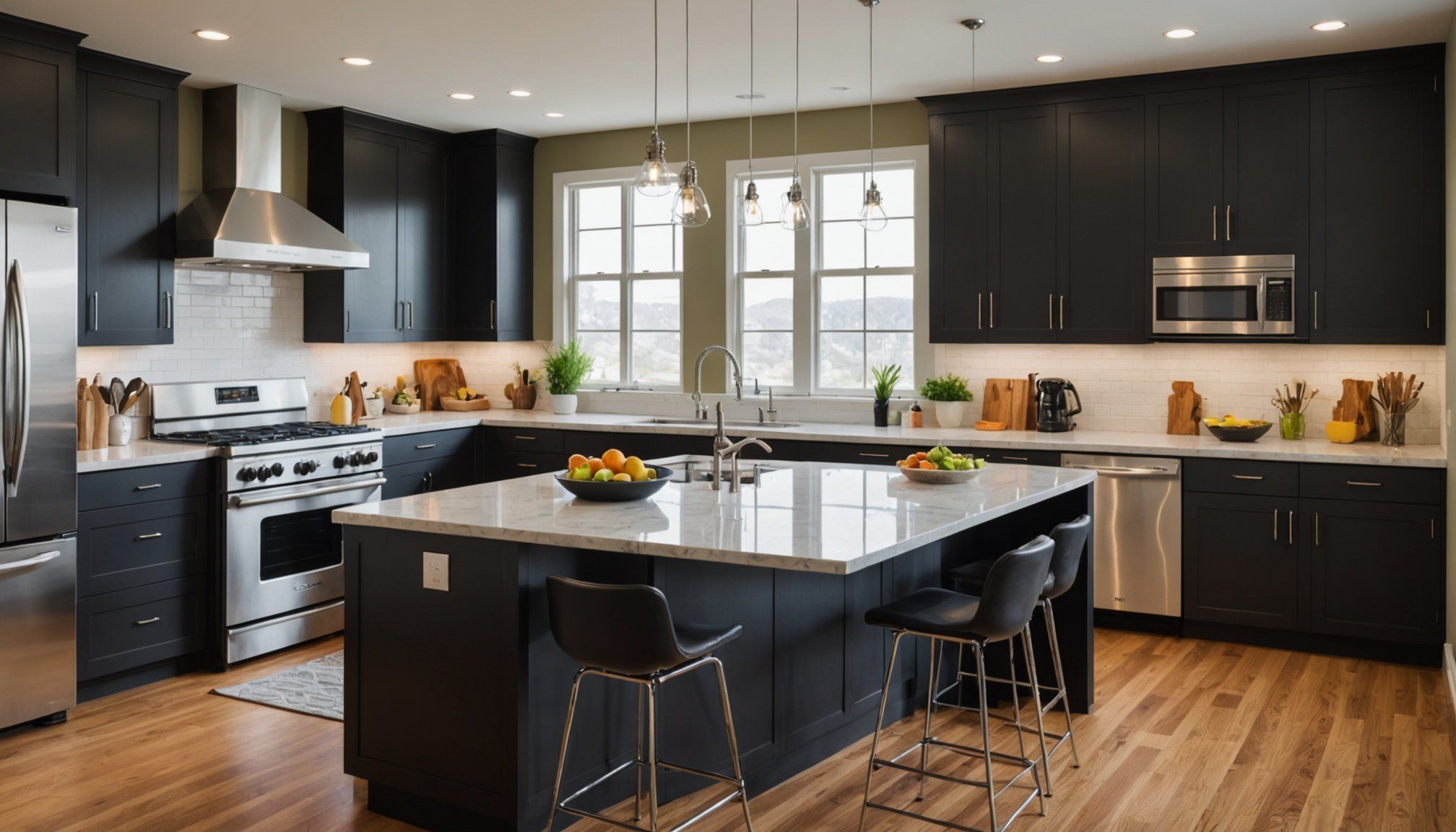Importance of Kitchen Design in Promoting Healthy Eating
The connection between kitchen design and healthy eating is often underestimated. Yet, the aesthetics of your kitchen can subconsciously influence your dietary choices. A well-organised, appealing kitchen encourages you to spend more time cooking rather than opting for takeaways. Colours, for instance, play a crucial role. Bright colours like yellow or green can invigorate the space, promoting positivity and creativity. In contrast, dull tones might lead to lethargy and reduce kitchen activity.
Psychological Effects of Colour and Space
Colours impact mood and behaviour. A vibrant space can boost energy levels and enhance your desire to prepare healthy meals. Additionally, open space, when combined with well-thought-out kitchen design, can diminish stress as you cook, encouraging continuous engagement with cooking rather than convenient, unhealthy alternatives. Design choices should prioritise both aesthetics and practicality.
This might interest you : Mastering your kitchen design: create the ultimate layout for seamless batch cooking success
Facilitating Healthier Meal Preparation
The kitchen layout also plays a significant part in supporting healthy eating habits. Think of a layout that minimises obstacles and maximises efficiency, like having the sink, refrigerator, and stove form a functional triangle. Such a design reduces effort and encourages meal preparation. A tidy, aesthetically pleasing environment serves as a daily invite to make nutritious choices and is integral to fostering a lifestyle geared towards wellness.
Smart Color Schemes for a Healthier Kitchen
In designing a kitchen, color psychology plays a crucial role. The right kitchen colours can set the tone for a healthy atmosphere. Warm colours, like reds and oranges, are known to stimulate appetite. They can make meals more inviting and enhance culinary experiences. However, they can also lead to overeating if not balanced.
Also to read : Revamp your contemporary kitchen with a chic coffee roasting station: essential tips for seamless integration
In contrast, cool colours such as blues and greens create a calming effect. They are associated with tranquillity and can help promote mindful eating by reducing stress and anxiety. This choice encourages slower eating, allowing better digestion and enjoyment of food.
Moreover, certain colours can transform a kitchen into a healthier environment. For instance, pastel shades of green are linked to freshness and vitality, influencing healthier food choices. Meanwhile, soft greys and whites can open up a space, making it feel clean and peaceful.
There are real-world examples where choosing the right colour schemes resulted in positive health changes. Some homeowners have revamped their kitchens with specific colours to create a healthy atmosphere. As a result, they reported eating less impulsively and more attentively. Opt for hues that make you feel calm, considering their psychological impact on your eating habits.
Organizing Your Kitchen for Healthy Living
Creating a kitchen environment that promotes healthy eating doesn’t have to be overwhelming. By incorporating effective storage solutions, meal preparation becomes more efficient, making healthy choices easier. Begin by organising your pantry and refrigerator so that healthy foods and snacks are always within reach.
Effective Storage Strategies
To ensure that you’re reaching for wholesome options, keep healthy snacks visible and accessible. Transparent containers can be used to store nuts, dried fruits, and other beneficial snacks. Position these at eye level in your pantry for quick and easy access. This strategy acts as a gentle nudge towards healthier snacking habits.
Decluttering for Functionality
Another critical aspect is decluttering your kitchen space. A clutter-free environment is not only aesthetically pleasing but also functional, reducing the stress associated with meal prep. Consider disposing of expired items and donating foods that don’t align with your nutritional goals. This opens up space for storing new, healthier choices.
Practical Storage Solutions
Invest in multi-purpose kitchen tools that aid in meal prep and storage solutions. Stackable containers and adjustable shelving can make better use of your space, keeping your kitchen organized. Having a dedicated spot for meal prep tools and supplies enhances your efficiency, making the process of preparing nutritious meals much smoother.
Space Optimization Techniques
Maximising kitchen layout efficiency can transform your cooking space into an organised, functional haven. One effective technique is harnessing vertical space. Installing high shelves or cabinets allows for storing seldom-used items, freeing up accessible areas for everyday essentials. Furthermore, magnetic strips can hold knives or spice containers on the walls, keeping surfaces clear for food preparation.
Creating distinct, functional work zones is critical for smooth kitchen operations. Designate areas for cooking, preparing, and cleaning, ensuring each zone has the necessary tools and appliances within easy reach. This ensures a seamless workflow and minimises unnecessary steps, optimising your time and energy.
Investing in space-saving kitchen tools can also enhance efficiency while promoting healthy cooking. Compact appliances like multi-cookers offer multiple functions yet occupy minimal space. Foldable measuring cups or stackable mixing bowls reduce clutter without compromising on functionality. Moreover, wall-mounted or under-shelf racks efficiently store pots and pans, keeping countertops clutter-free and improving accessibility.
Smart space optimization involves creative solutions tailored to your needs. By incorporating vertical storage, organising efficient work zones, and using versatile tools, you can cultivate a practical and enjoyable cooking environment. Implementing these strategies not only enhances your kitchen’s functionality but also enriches your culinary experiences.
Incorporating Healthy Cooking Tools and Appliances
Incorporating healthy cooking tools and kitchen appliances into your daily routine can significantly enhance your culinary experience and nutritional intake. When it comes to preparing nutritious meals, essential appliances such as blenders, steamers, and air fryers are indispensable. These tools allow you to create a variety of healthy dishes while preserving the essential nutrients of ingredients.
Blenders, for instance, can whip up nutrient-packed smoothies and soups in no time, making them perfect for individuals on the go. Similarly, steamers are excellent for retaining vitamins and minerals when cooking vegetables, giving you a healthier meal option. Air fryers provide a way to enjoy traditionally fried foods, but with significantly less oil, reducing overall fat consumption.
In addition to these essentials, there are several innovative kitchen gadgets that facilitate healthy cooking. Spiralizers, for example, transform vegetables like courgettes into pasta-like strands, offering a low-carb alternative to traditional pasta. Instant Pots combine multiple functions into one, enabling quick preparation of healthy recipes such as soups, stews, and even yoghurt.
Having these cooking tools easily accessible in your kitchen encourages healthy eating habits by simplifying the meal preparation process. Moreover, it inspires creativity in your diet, making healthy cooking a much more enjoyable and sustainable practice.
The Role of Natural Elements in Kitchen Design
Incorporating natural elements into kitchen design enhances both aesthetics and functionality. Integrating elements such as plants and natural light fosters a biophilic design that promotes a healthier ambiance. The inclusion of greenery, whether through potted herbs or hanging plants, not only encourages a soothing environment but also purifies the air, creating a more vibrant space.
Biophilic design fundamentally impacts mood and dietary habits. Exposure to abundant natural light can positively influence serotonin levels, uplifting overall mood and potentially leading to healthier food choices. This effect is amplified by the visual presence of nature, which can inspire a more mindful approach to cooking and eating.
Consider case studies where kitchens have effectively utilized natural elements to enhance their design. For example, a kitchen enveloped in large windows that usher in sunlight creates an inviting and warm ambiance, while the strategic placement of green accents like succulents or ivy can add an organic touch to the modern décor. These kitchens not only offer an aesthetically pleasing setting but also harness the psychological benefits of nature, transforming cooking spaces into havens of relaxation and creativity.
Integrating biophilic design elements not only elevates the kitchen’s visual appeal but also nurtures a space conducive to well-being.
Psychological Impact of Kitchen Design on Eating Behaviors
Creating a kitchen environment that promotes healthy eating behaviors involves understanding the subtle influence of kitchen design on our meal choices. Nutrition psychology delves into how we can be subconsciously led by the way our kitchen is set up.
The layout and arrangement of the kitchen can greatly affect portion sizes. For instance, keeping oversized dishes might lead to larger servings, as our eyes often guide our portions before the stomach does. On the other hand, organising the kitchen to position healthier options at eye level can encourage better food choices.
Moreover, the kitchen space can significantly impact family meal dynamics. A welcoming and inclusive cooking area can encourage more frequent family gatherings and shared meals, which are essential for reinforcing healthy eating habits. Conversely, a cluttered or cramped kitchen may discourage cooking at home altogether, leading to more takeout or less nutritious options.
To foster mindful eating habits, consider strategies like reducing distractions by keeping appliances and gadgets minimal on countertops. Promoting natural light can also make the kitchen a more inviting space. Additionally, using calming colours can set the tone for a more relaxed meal experience, encouraging slower eating and better digestion. Implementing thoughtful design can help cultivate a healthier relationship with food in everyday life.











